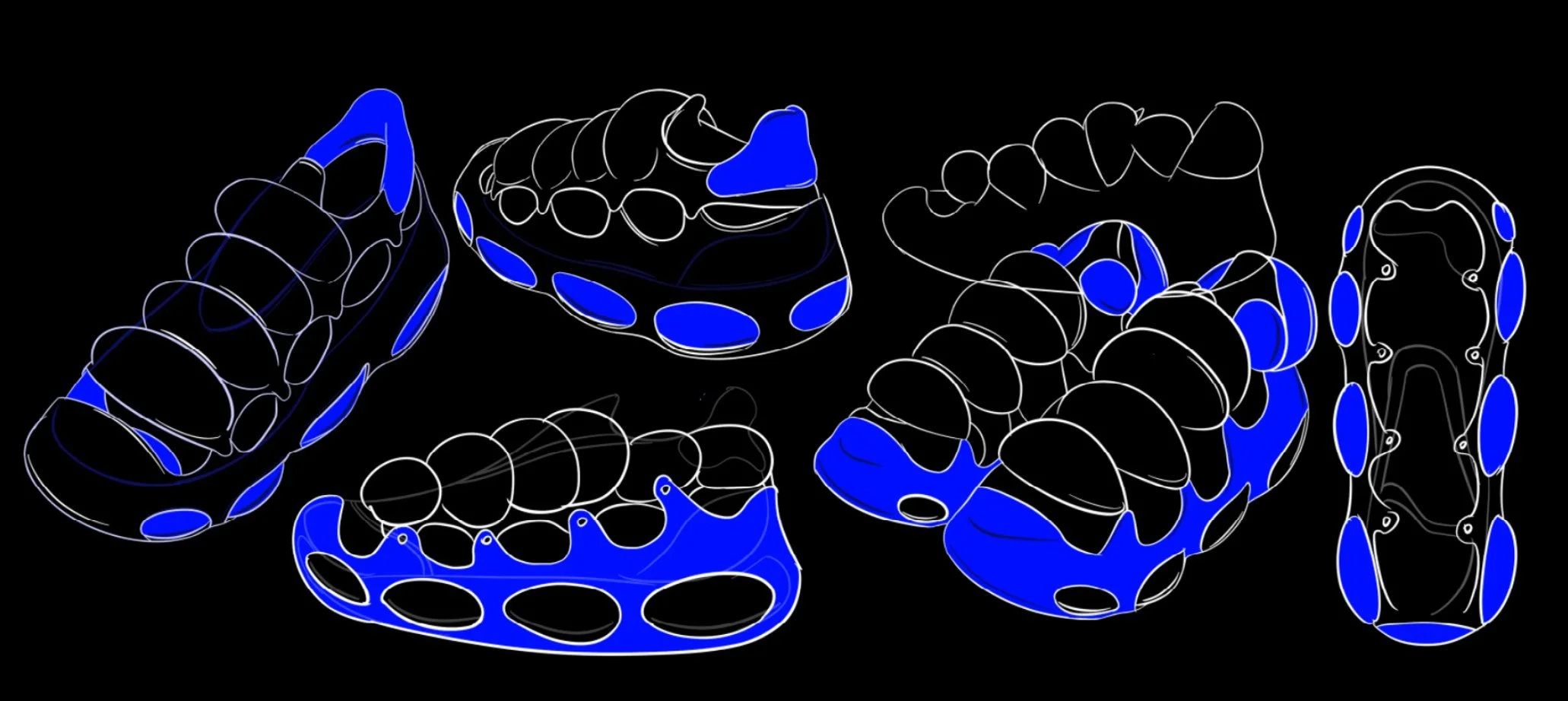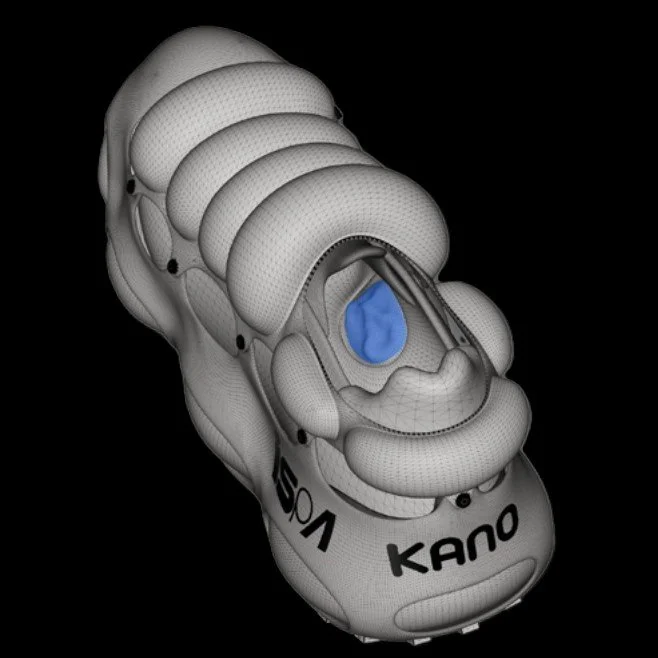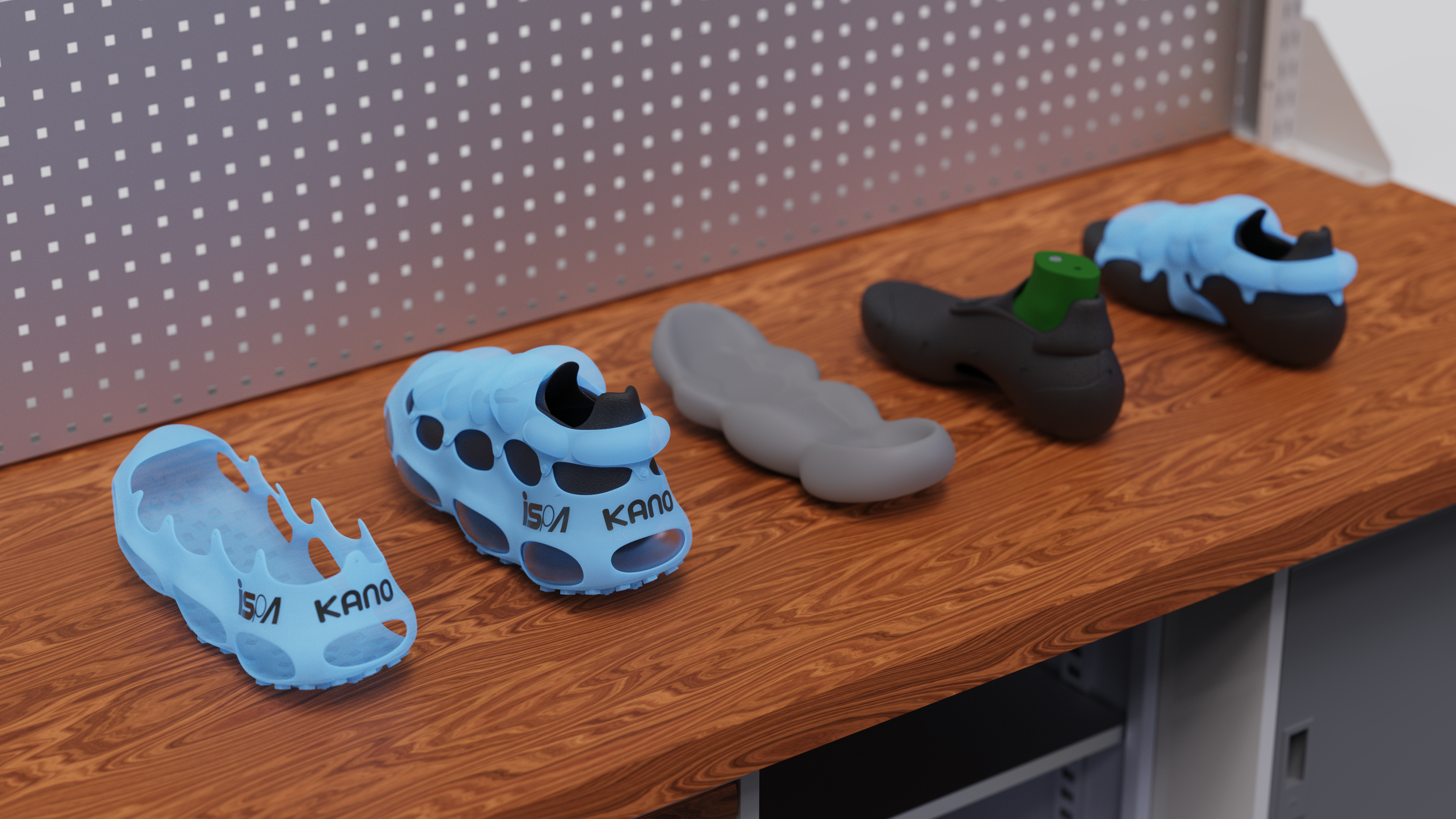Inflator
Individual Project-2023
Inflator, a pair of modular deisign sneaker that interact with feet, represents an exhilarating fusion of fashion and interactivity, purposefully crafted to captivate young office workers and inspire their focus on sedentary issues, preventing diverse health concerns stemming from prolonged periods of inactivity.
This project was collaborated with Kano computing company, designed according to its corporate attributes.
design origin
In modern society, with the proliferation of office automation and remote work, prolonged sitting has become a norm in daily life. Studies have shown that extended periods of sitting have numerous negative health impacts, such as increased risks of chronic diseases, muscle atrophy, and circulation problems. Moreover, prolonged sitting not only affects physical health but can also lead to mental health issues, such as anxiety and depression.
To address this issue, we have designed a pair of shoes with special features aimed at encouraging people who sit for long periods to stand up and move, thereby breaking the pattern of prolonged sitting. These shoes combine modern sensor technology with behavioral science, monitoring the wearer's activity status through built-in sensors. After sitting for an extended period, the shoes prompt the user to stand or engage in brief activities through a gentle vibration. This interaction is designed to seamlessly integrate into the user's daily life, providing a gentle, non-compulsory health intervention.
The shoes are uniquely equipped with two sets of airbags: one located in the arch inside the shoe, and another on the upper, where shoelaces typically are. When the built-in sensors detect prolonged sitting, the arch airbags inflate automatically, creating a slight discomfort to encourage the user to stand and move. At the same time, the airbags on the upper deflate, making the shoes look less appealing. This not only alerts the wearer but also makes it noticeable to others around, increasing the possibility of social interaction.
The inspiration for designing these shoes came from an in-depth observation of modern lifestyles and their impact on human behavior. We believe that with the aid of smart wearable technology, people can be effectively motivated to change their sedentary habits, thereby improving their quality of life and work efficiency. The design of these shoes not only focuses on functionality but also on style and comfort, ensuring that users can enjoy health benefits while also expressing their personal style.
Through this project, we hope to provide an innovative solution for the sedentary population, promoting a healthier work and lifestyle.
INSIGHTS & PRECEIVED AFFORDANCE
Since 1950, sedentary jobs have increased by 83%. Additionally, a growing number of young graduates are entering the office workforce, where sedentary behavior has become a significant part of their lives. However, they often overlook the issue of prolonged sitting. They remain seated during office hours and continue this pattern during breaks and leisure time, engaging in activities like watching short videos or playing games.
It appears they believe the potential health problems associated with prolonged sitting do not align with their youthful physiques. However, considering the sedentary health issues that typically develop gradually and are often only addressed after noticeable health problems arise, it's crucial to focus on preventative measures.
Data suggests that engaging in just an additional two minutes of exercise daily can reduce the risk of premature death caused by sedentary behavior by 33%. My research has found that most companies where young people work do not impose specific dress codes, thus allowing for flexible attire solutions.
Based on this, I plan to design a preventative solution to combat the issue of prolonged sitting among the young office population. This solution will not only meet the basic functionality but will also integrate exercise into their work and life in a stylish and enjoyable manner.
moodboard
IDEATION
AIRBAG POSITION & SHAPE TEST
I conducted tests on several airbags of various shapes and sizes to examine their deformation based on different inflation levels and to explore the viability of using parallel airbags. The findings indicated that the airbags must be rigid on one side and inflatable on the other. If both sides are flexible, it leads to excessive and unnecessary deformation upon inflation.
After testing the shape, I inserted the airbag into my sock to simulate the sensation of its expansion within the shoe. The experimental results demonstrate that re-inflating the airbag does not substitute for the function of laces. The contraction of the airbag is localized and does not pull the entire upper together as laces would. Additionally, the pressure caused by the expansion of the airbag is more compressive and less comfortable than expected.
sketch
exploded view
sustainable considerations
Traditionally, shoe designers have relied on glue and other bonding agents to assemble footwear, making disassembly and recycling nearly impossible. Recycling shoes typically involves shredding, a process that consumes significant energy and limits the use of recycled materials.
By creating shoes that can be easily disassembled (modular), we can reduce the carbon footprint of the product and open up new possibilities throughout its lifecycle. Additionally, modular shoe design promotes a circular economy by facilitating the reuse and recycling of components. When a part of the shoe becomes obsolete or no longer serves its purpose, it can be removed and replaced with an upgraded or more suitable part.
This approach reduces the demand for new materials, decreases waste generation, extends the lifespan of the shoe, and lowers overall resource consumption as old parts can be repurposed, recycled, or refurbished.
dynamic interactive airbags
When the user has been inactive for an extended period, the interactive airbag at the arch of the foot will inflate, providing a reminder by inducing a sense of discomfort. Once the sensor detects that the user has engaged in sufficient activity, it will begin to deflate the airbag, returning it to its original state.
The airbag on the surface primarily serves as visual feedback; it begins to deflate and lose its vitality when the user has not exercised for a prolonged period. Of course, once the user completes the prescribed exercises, it will reinflate.
















